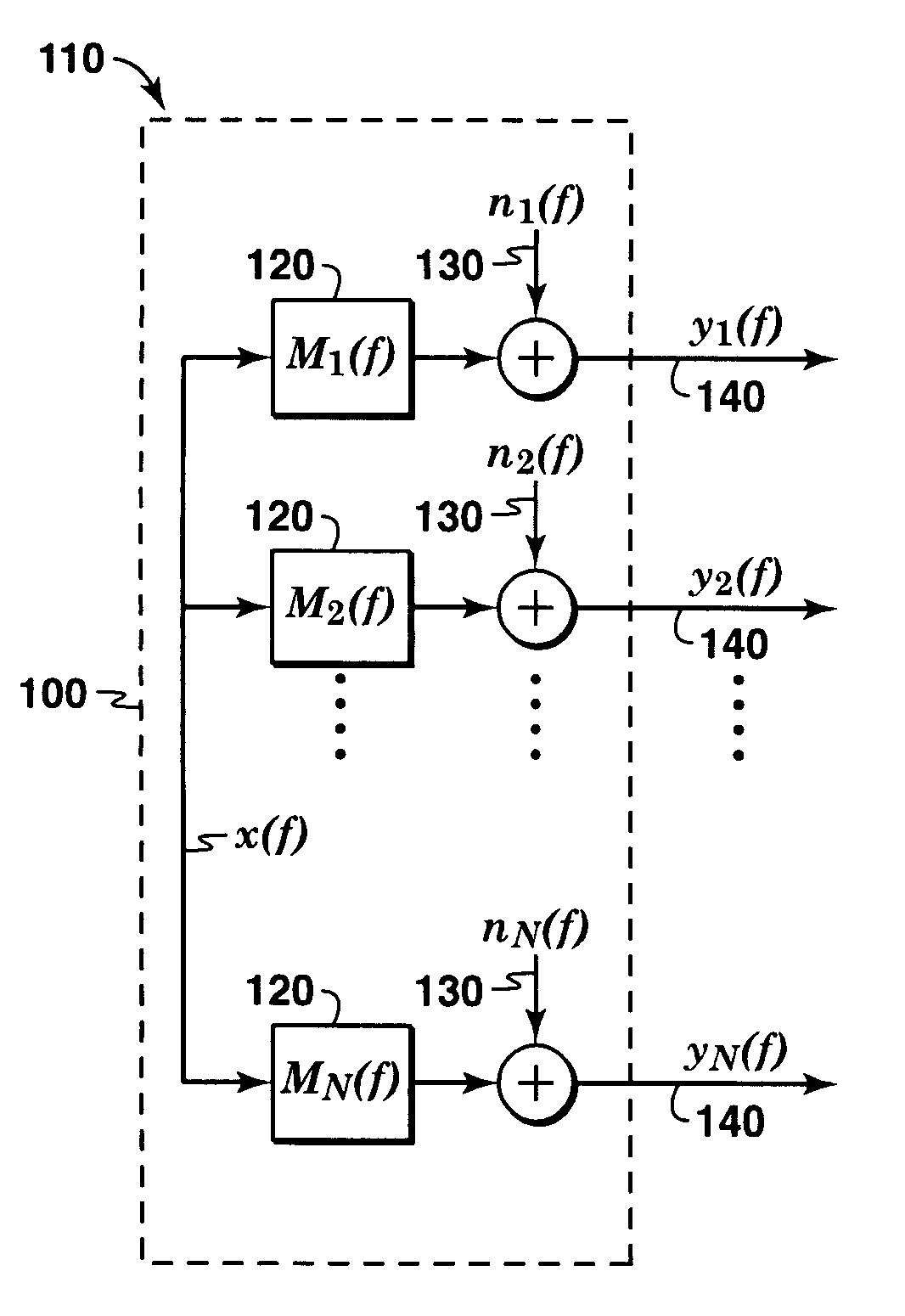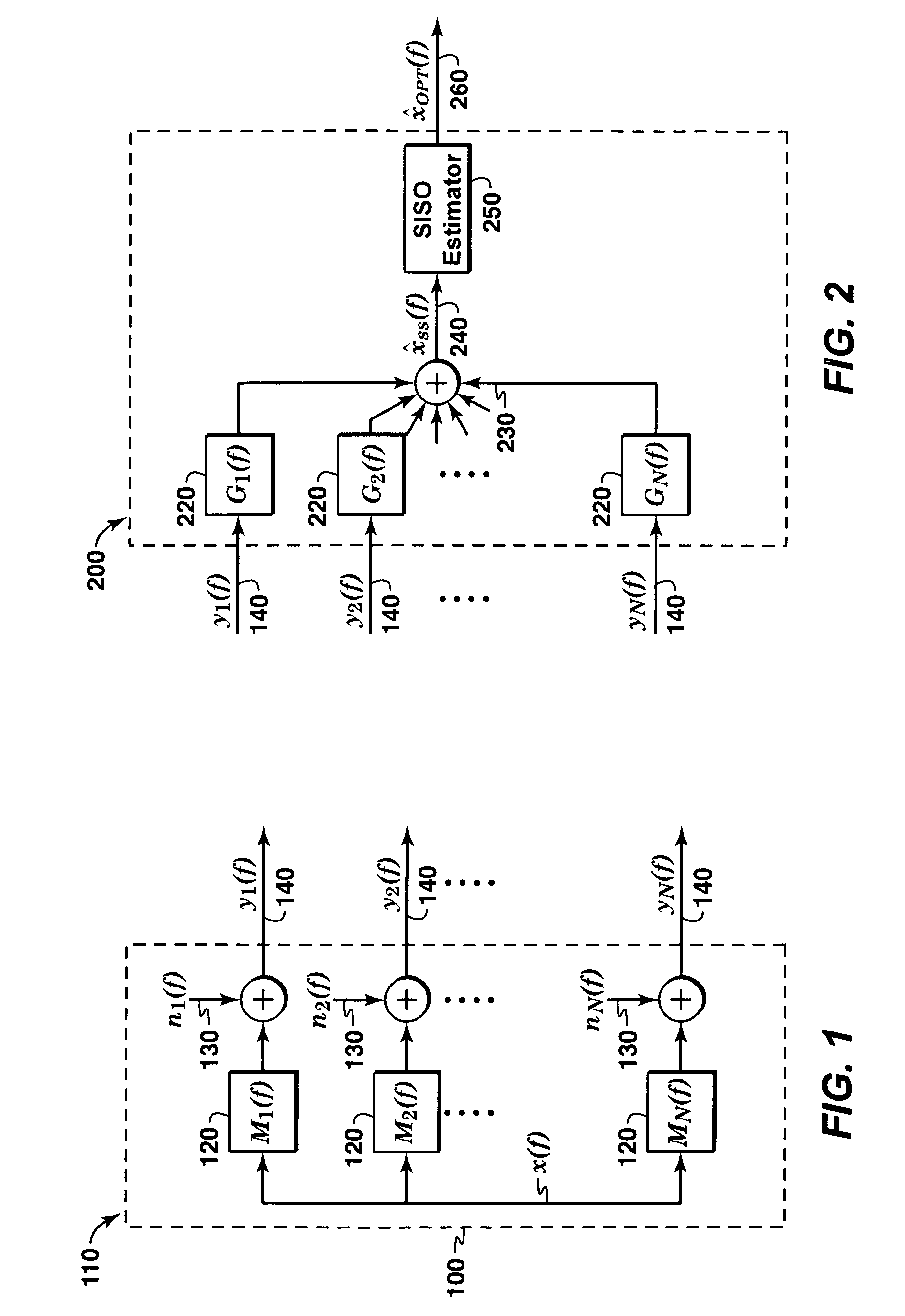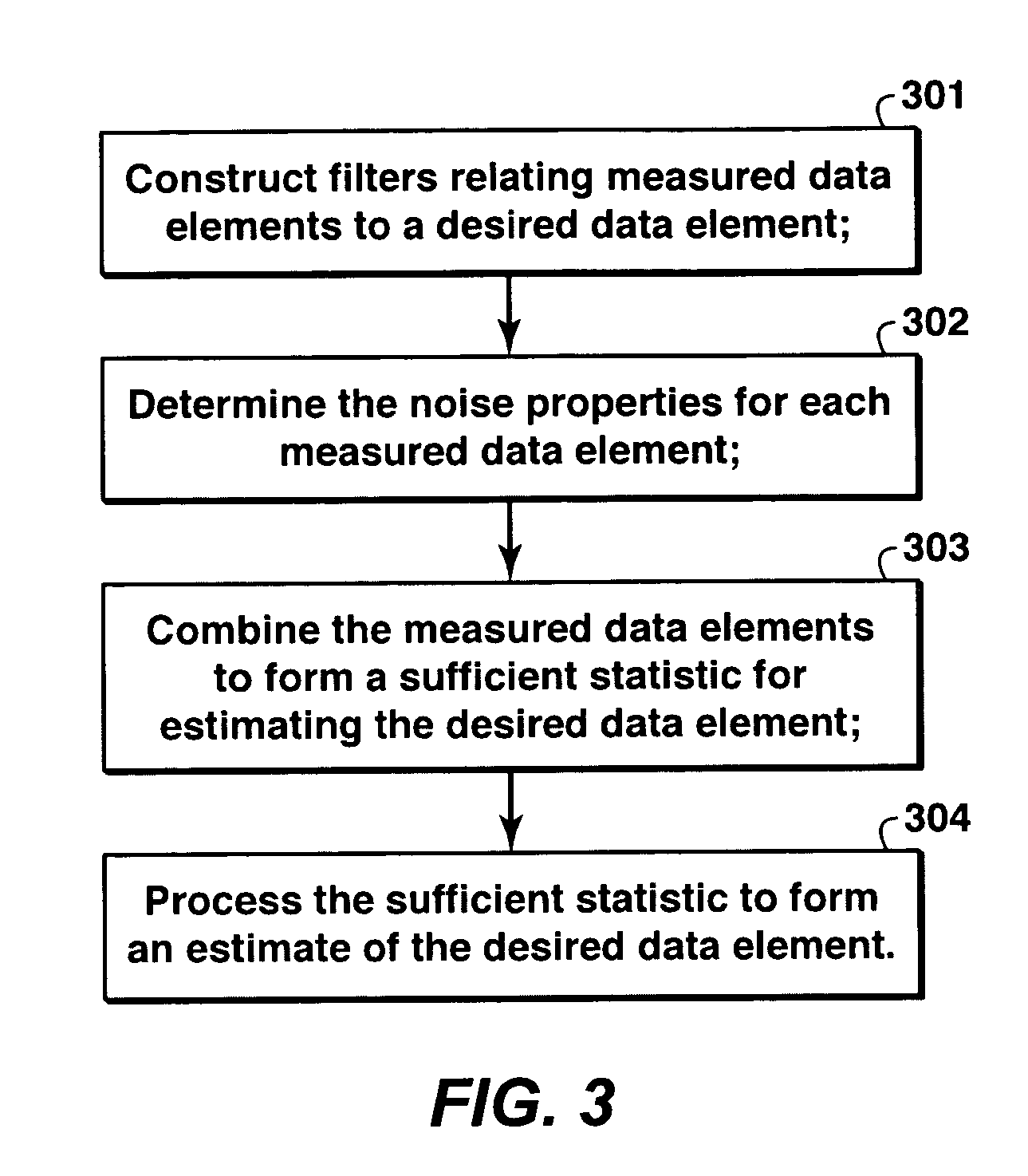Method for combining seismic data sets
a seismic data and combining technology, applied in the field of geophysical prospecting, can solve the problems of difficult to safely operate towed streamer surveys in the vicinity of obstacles, and the least expensive technique for acquiring marine seismic data is the towed
- Summary
- Abstract
- Description
- Claims
- Application Information
AI Technical Summary
Problems solved by technology
Method used
Image
Examples
example
[0064] The inventive method is now demonstrated using hypothetical seismic data. The subsurface is assumed to be composed of horizontal layers. FIGS. 5(a), 5(b) and 5(c) show the density (rho) 51, compressional velocity (Vp) 53, and shear velocity (Vs) 55 respectively versus zero-offset reflection time. Not shown is a 50 m deep-water layer at the top of the model (rho=1 g / cc and Vp=1500 m / s) which is bounded above by a pressure release surface. The measured data elements will be two common depth point (CDP) gathers of synthetic ocean bottom cable data collected with co-located hydrophone and vertical geophone sensors on the water bottom. The CDP for pressure 61 and vertical velocity 63 gathers are respectively shown in FIGS. 6(a) and 6(b). The inventive method will be applied to combine the CDP gathers to form a new CDP gather with reduced multiple levels.
[0065] The synthetic seismic data used in this demonstration was created using software which solves the elastic wave equation b...
PUM
 Login to View More
Login to View More Abstract
Description
Claims
Application Information
 Login to View More
Login to View More - R&D
- Intellectual Property
- Life Sciences
- Materials
- Tech Scout
- Unparalleled Data Quality
- Higher Quality Content
- 60% Fewer Hallucinations
Browse by: Latest US Patents, China's latest patents, Technical Efficacy Thesaurus, Application Domain, Technology Topic, Popular Technical Reports.
© 2025 PatSnap. All rights reserved.Legal|Privacy policy|Modern Slavery Act Transparency Statement|Sitemap|About US| Contact US: help@patsnap.com



